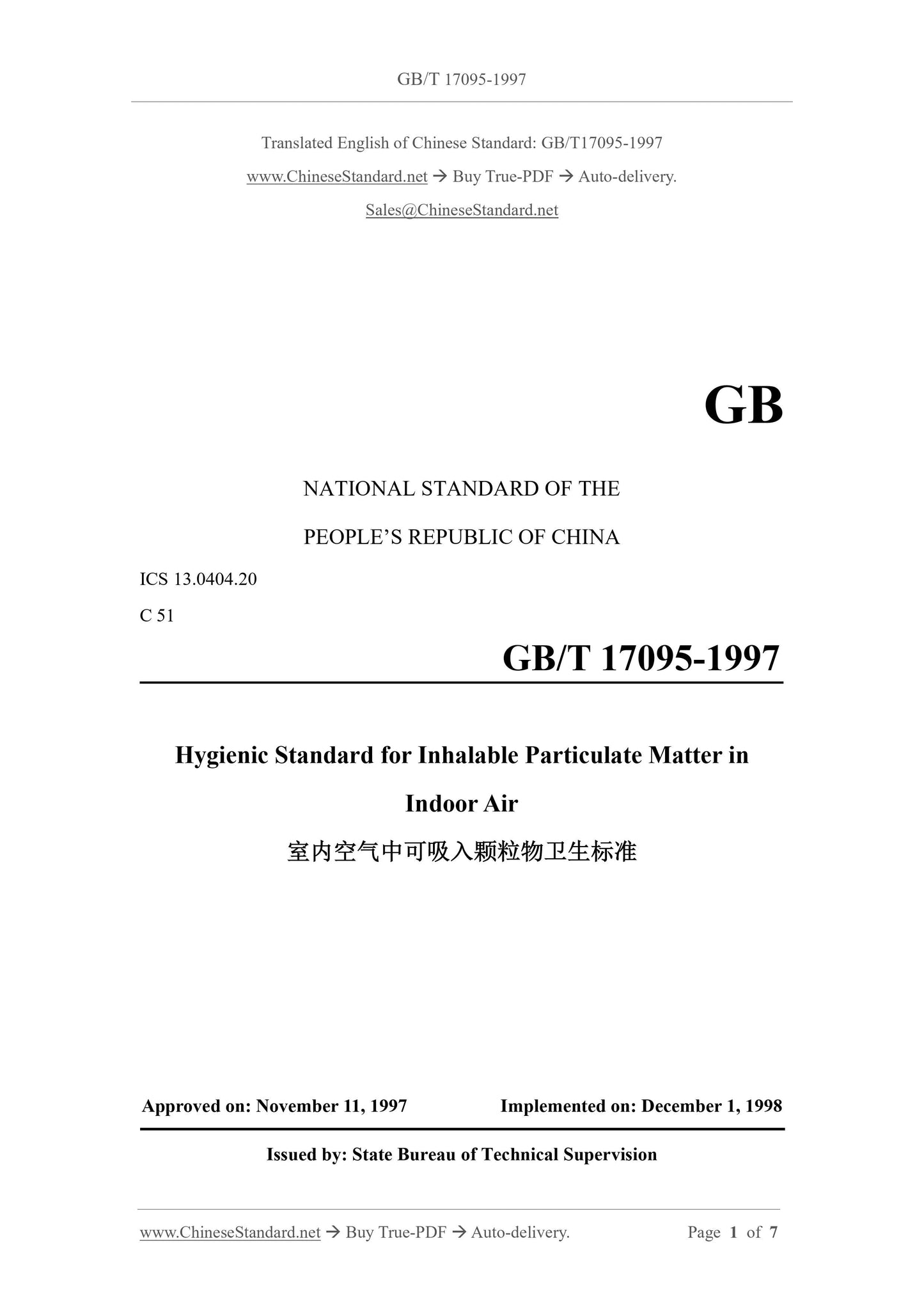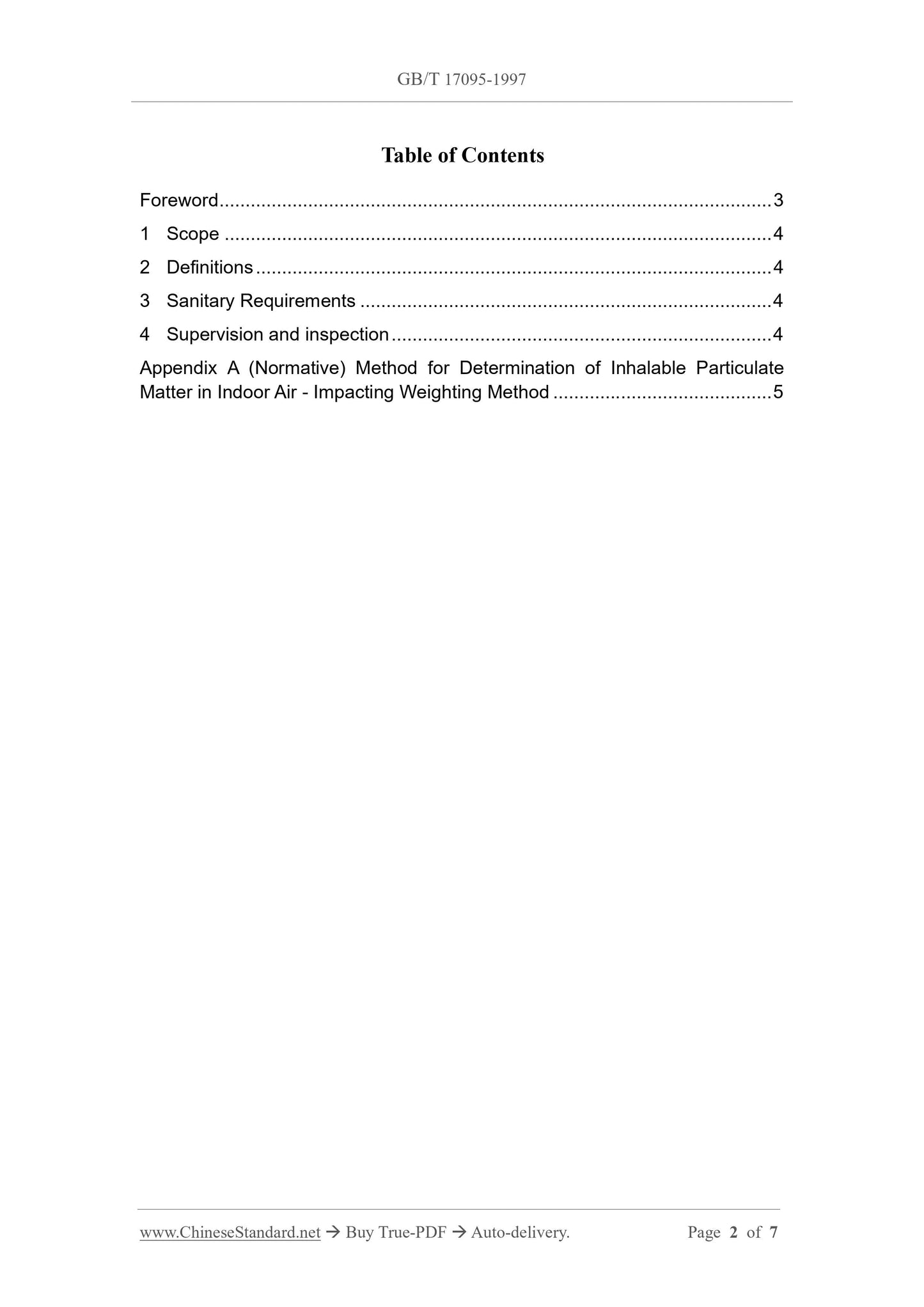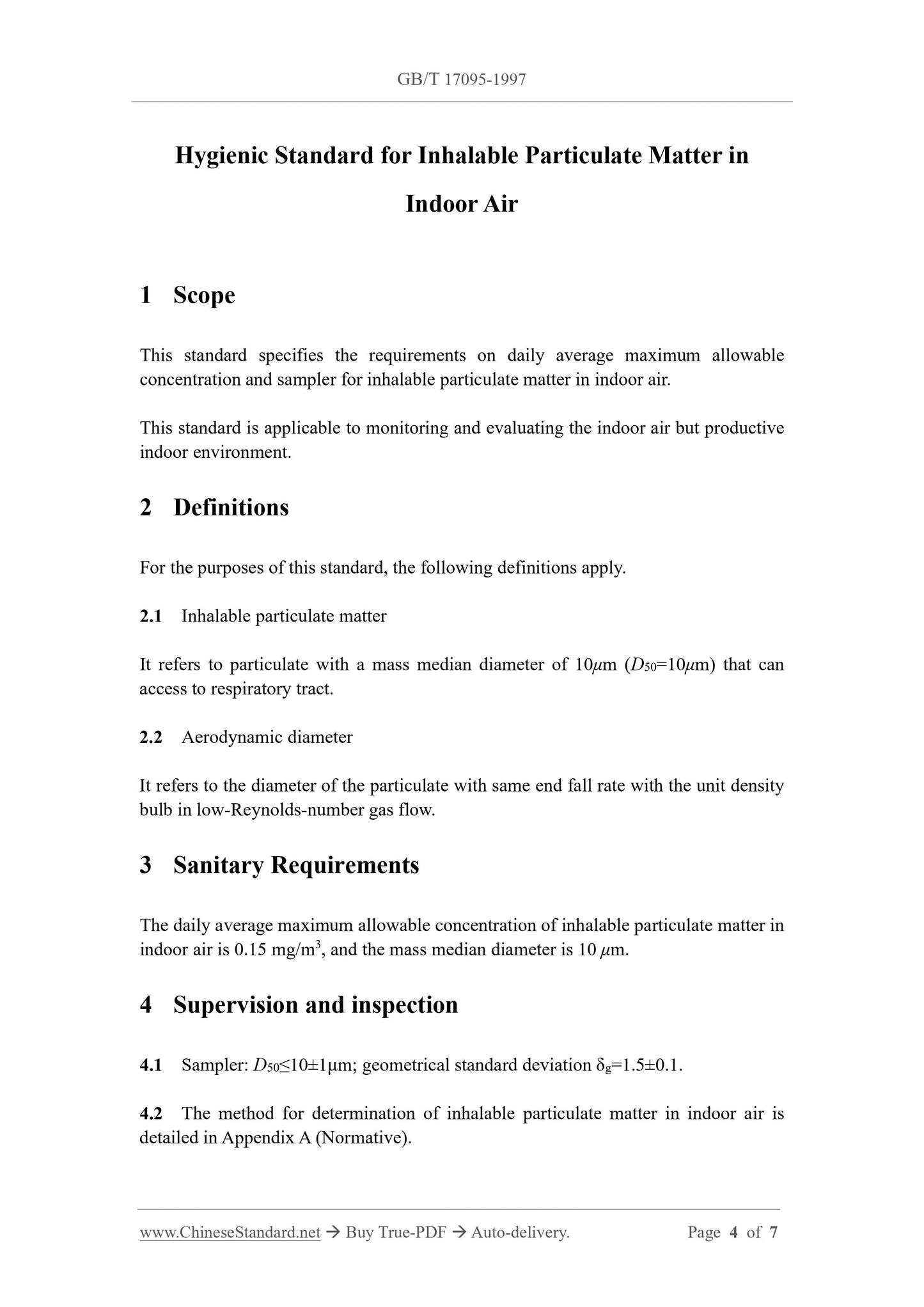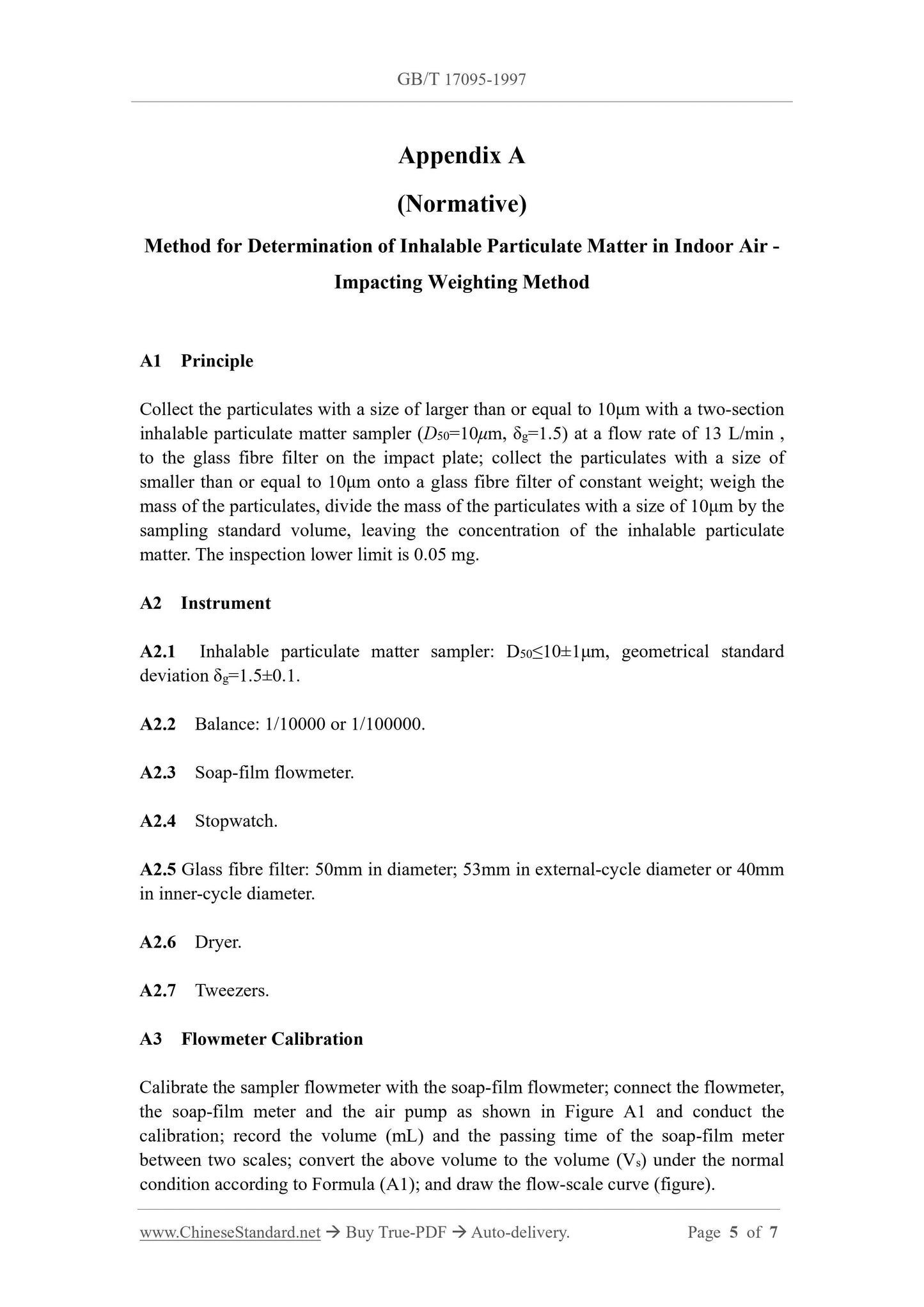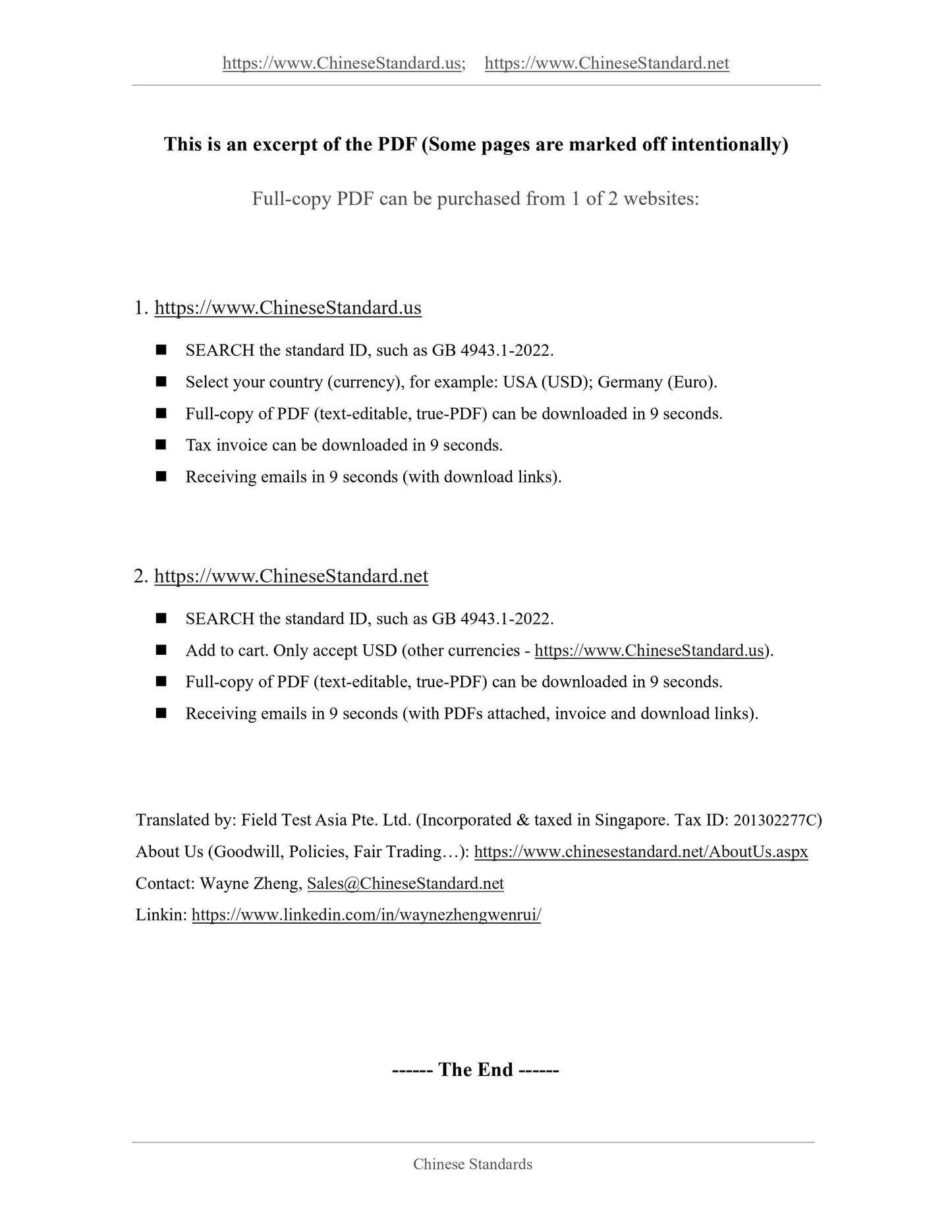1
/
of
6
www.ChineseStandard.us -- Field Test Asia Pte. Ltd.
GB/T 17095-1997 English PDF (GB/T17095-1997)
GB/T 17095-1997 English PDF (GB/T17095-1997)
Regular price
$110.00
Regular price
Sale price
$110.00
Unit price
/
per
Shipping calculated at checkout.
Couldn't load pickup availability
GB/T 17095-1997: Hygienic standard for inhalable particulate matter in indoor air
Delivery: 9 seconds. Download (and Email) true-PDF + Invoice.Get Quotation: Click GB/T 17095-1997 (Self-service in 1-minute)
Newer / historical versions: GB/T 17095-1997
Preview True-PDF
Scope
This standard specifies the requirements on daily average maximum allowableconcentration and sampler for inhalable particulate matter in indoor air.
This standard is applicable to monitoring and evaluating the indoor air but productive
indoor environment.
Basic Data
| Standard ID | GB/T 17095-1997 (GB/T17095-1997) |
| Description (Translated English) | Hygienic standard for inhalable particulate matter in indoor air |
| Sector / Industry | National Standard (Recommended) |
| Classification of Chinese Standard | C51 |
| Classification of International Standard | 13.040.20 |
| Word Count Estimation | 4,462 |
| Date of Issue | 11/11/1997 |
| Date of Implementation | 12/1/1998 |
| Issuing agency(ies) | State Bureau of Technical Supervision, Ministry of Health of the People Republic of China |
| Summary | This standard specifies the indoor air can PM10 daily average maximum allowable concentration and sampling requirements. This standard applies to indoor air monitoring and evaluation, not for productive workplace indoor environment. |
Share
